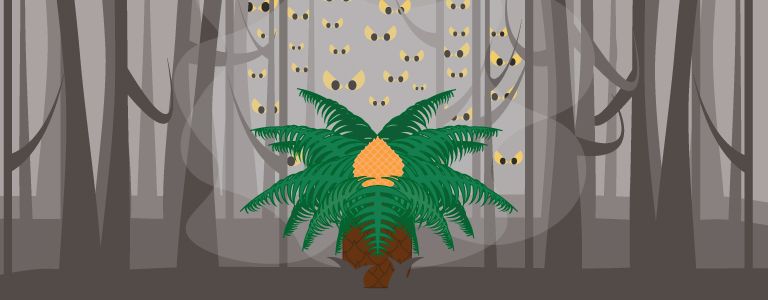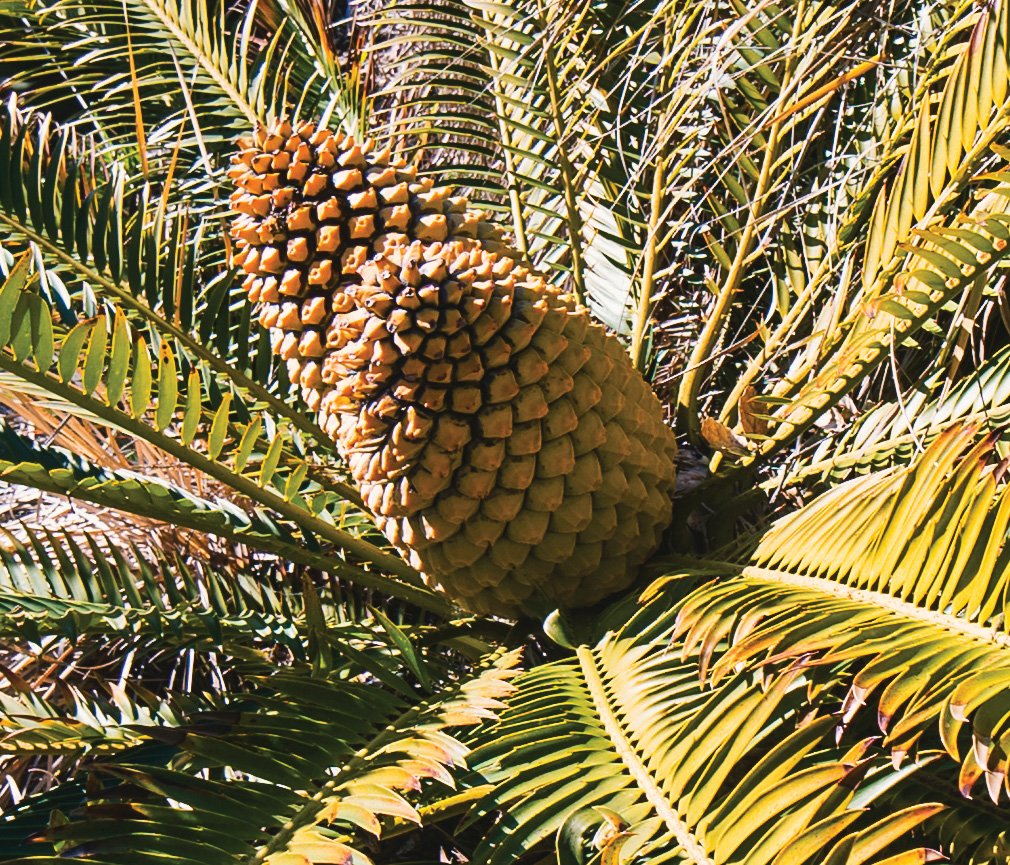
Tucked away behind the UC Berkeley football stadium lies a phantasmagoria of towering cacti and flowers. The UC Berkeley Botanical Garden (UCBG) is both a destination for an easy afternoon with visiting parents and an homage to the sheer variety of forms plant life can take. It is particularly stunning in the spring when many flowers, some familiar, some bizarre, are blooming.
But this garden is much more than a collection of pretty flowers. The specimens on display are hard-won: some painstakingly collected from the tops of the Andes in the 1950s, others dug out from the crannies of Mexican deserts, and others still dramatically seized from the hands of South African poachers trying to sell rare plants on the black market. Behind the scenes of aesthetic charm in this well-tended garden, scientists and conservationists are hard at work to maintain and understand the incredible genetic diversity stored in a 34-acre plot in Strawberry Canyon.
Garden philosophy
Since its foundation in the 1800s, the UCBG has laid the groundwork to become a hub of scientific research and conservation, which turns out to be a great deal more work than a bit of landscaping and plant husbandry. Unlike many botanical gardens, the UCBG makes certain that each plant accepted into the collection comes from its native habitat in the wild and that the location of origin is precisely recorded. This small piece of data is invaluable to scientists. Using plant location in conjunction with genetic material, scientists can create a snapshot of a plant’s evolutionary history in order to solve the puzzle of its origins. Many ongoing projects based on samples from the garden use this evolutionary information as a foundation to pursue a wide range of interesting questions about plant evolution, development, and tolerance to drought and predation.
By only maintaining plants obtained from the wild, the garden is also able to advance conservation efforts such as seed banking and the reintroduction of threatened populations to their natural habitats. The UCBG is a live preserve of wild genetic diversity, protecting rare plants from extinction
Wild plants, however, present unique challenges for the garden. Due to remote or difficult to reach habitats or a lack of viable seeds or pollen, a dead plant in the garden may be impossible to replace. Preventing the loss of specimens, from single plants to entire species, is the garden’s central mission.
The world’s biodiversity is in peril. In every ecosystem, the rate of extinction greatly exceeds the rate of emergence of new species. While previous mass extinctions have occurred due to geologic phenomena, the primary cause of the current extinction is human. Through our influence, humans have dramatically altered the landscape to the detriment of many species. On top of climate change driven by our huge consumption of energy, human activities like clearing land for lumber or livestock, introducing invasive species that outcompete native flora, and extracting plants or animals deemed valuable can throw the land off balance and irreversibly damage ecosystems. Mass extinction means the world is rapidly becoming less diverse, and places like the UCBG are sprinting to save our planet’s precious biodiversity.
Efforts to conserve biodiversity
 Fiddlenecks pictured in the wild in Santa Clara. Credit: Dawn Endico, Flikr; Creative Commons
Fiddlenecks pictured in the wild in Santa Clara. Credit: Dawn Endico, Flikr; Creative Commons
UCBG assistant curator Clare Loughran stood in the shimmering heat, surrounded by poison oak, on a grassy hillside in Livermore, California. Flushed and trying to stay hydrated, Loughran was working through a heatwave to assess the health of a plot of vibrant yellow flowers, with clusters of elongated bells designed to attract hummingbirds.
The previous winter, she and her team had been fighting opposite forces. Scratching into the frozen ground and soaked by rain, garden staff and volunteers planted over 1000 large-flowered fiddlenecks in a small, steep plot of land in an effort to save the species from total erasure.
Shortly after the fiddlenecks were planted in the winter of 2017, the landscape was pummeled by record-breaking rains onto soil that was already destabilized from the prior four years of drought. Under these extreme conditions, many of the UCBG staff worried that their hours of strenuous work had been in vain. But in the heat of the following summer, Loughran observed the hillside plot had been a success and many of the transplanted flowers had taken hold.
Since 1985, fiddlenecks have been ranked by the California Native Plant Society as extremely rare and threatened, with a rapidly shrinking population. Over the years, funding from several government organizations has been allocated to save this species. In collaboration with the US Bureau of Reclamation, the UCBG grew thousands of seedlings in-house and in volunteer’s gardens in preparation for outplanting them to this carefully chosen site last summer. Prior to these efforts, only one self-sustaining population of fiddlenecks remained in the wild.
Even for people who appreciate plants, it might seem strange to devote so many hours and millions of dollars in funding to the conservation of one rare flower that has trouble thriving on its own. However, it is actually quite common for conservation efforts to focus on saving a single prized species (think tigers and pandas). Making a plan and providing funding to save a single organism is simply easier than saving a whole habitat; from the government perspective, a single-species effort is more tractable.
But fiddlenecks aren’t the only precious California plant the UCBG works to protect. As a member of California Plant Rescue, the UCBG is also working to preserve all native California flora in house.
California’s pleasant mediterranean climate zone attracts plenty of human life, but is also the only home to thousands of unique flowers and plants. The California Floristic Province, a geographical region spanning much of the length of California, is an internationally recognized biodiversity hotspot, one of only 25 in the world. This designation means that the region is particularly rich in endemic vascular plants and has lost at least 70% of its primary vegetation.
In total there are around 6500 different taxa of plants native to California, and an incredible one third of them are found here and nowhere else. California is supremely rich in biodiversity but also pressed for space. The skyrocketing population and desire to convert wild land for agriculture constantly threaten this special place. The UCBG is in a unique position to protect California’s threatened biodiversity. Toward this goal, the garden prioritizes conservation of threatened California taxa, an estimated 800–2000 different kinds of plants on the verge of extinction, with five or fewer known individual populations remaining in California.
Outplanting and restoring populations, like Clare Loughran’s work with the fiddlenecks, is not possible on the scale of thousands of threatened species, so the UCBG takes advantage of a different conservation technique: seed banking. The UCBG staff go out in the field to collect seeds and pollen from rare California plants in order to preserve them in refrigerated storage for long periods of time. Seed banking is like Conservation 101—all you need are some seeds and a cheap refrigerator and you can preserve the biodiversity of thousands of species for decades. But doing it right takes effort.
Because the purpose of seed banking is to ensure biodiversity is conserved, conservationists have to be careful when collecting seeds. Taking seeds from only a single plant or from the plants that are the easiest to reach can produce genetic bias in the banked sample. Seeds from different plants of the same species are also stored separately in order to retain their use for research and conservation efforts in the future.
After collection, seeds are cleaned and stored in the environment designed to suit the needs of each species. Every kind of seed has slightly different requirements; some are sensitive to the cold, while others depend on constant humidity. Getting this just right can be tricky. Optimal conditions are determined by trial and error, but time and materials are in dangerously short supply as the native populations of these endangered plants are blinking out of existence. Conservationists have to test storage conditions as efficiently as possible to find what will work for storage without running out of seed.
Unfortunately, not all seeds are amenable to lying dormant in a refrigerator for ten years. By necessity, seeds in storage are periodically regrown to confirm their ability to germinate and grow normally. The seeds must then be replaced in the bank, either by bulking up seeds from plants living in the garden or, more taxingly, going out in the field to collect more. The fewer or more remote the populations of plants are in the wild, the more challenging it is to maintain that plant in the seed bank.
In a way, conserving biodiversity in a sterile refrigerator doesn’t feel like saving anything at all, especially when the environments the seeds come from are rapidly disappearing. But the seeds in storage represent hope for the future. Conservationists hope that, one day, banked seeds can be transformed into restored populations, reversing the current habitat biodiversity loss. No individual effort is the best or easiest approach to conservation, which is why the UCBG takes a multifaceted, collaborative approach to preserving California’s precious biodiversity.
Operation: cycadelic pursuits
 Cycad from the botanical garden.
Cycad from the botanical garden.
Seed banking and outplanting of threatened species are effective tools in the fight against climate change and habitat destruction, but the UCBG is engaged in an altogether different kind of conservation battle with a more insidious antagonist—poachers.
Cycads are a rare and evolutionarily ancient group of plants that once dominated Earth’s landscape in the time of dinosaurs. They produce cones like those of pine trees and redwoods, but look more like squat, woody pineapples growing low to the ground, with sharp palm-like fronds. While they are not stereotypically beautiful, cycads have a prehistoric aesthetic that, for some, makes them a high-end commodity.
In many habitats, even the pristine forests of South Africa, natural cycad populations have virtually disappeared at the hands of poachers. Just like rhinoceros horns, elephant ivory, and tiger pelts, rare plants are irresistible luxuries for ultra-rich consumers who will go to extremes to get the plants they want.
Incredibly, a single cycad can be worth up to $50,000. The rarer and more valuable the plant, the more extreme the measures taken to acquire it. Some buyers will “hire a team of people to fly a helicopter over a rocky outcropping and use dynamite to blast the wall it’s stuck to,” according to UCBG head curator Dr. Holly Forbes.
Dr. Vanessa Handley, UCBG’s Director of Collections and Research, recently found a cycad seedling—likely illegally obtained—for sale online that sold within 24 hours for $9,000. That seemingly exorbitant cost is despite the many decades it will take for the seedling to produce anything an owner would be proud to display.
With the intensity of poaching, some species of cycads no longer exist in the wild. In the early 2000s, the US Fish and Wildlife Service, a government organization focused on conservation, decided to take action. This was the birth of Operation Botany, a sting operation designed to capture key organizers of illegal cycad trafficking and import from South Africa (described in detail in the 2005 New York Times article “The Cult of the Cycads”). To this end, special agent Kenneth McCloud of the U.S. Fish and Wildlife service took on the fake persona of a wealthy cycad enthusiast and set out with a government budget of about $225,000. Over a year of networking with cycad collectors and attending cycad shows, McCloud found and targeted Jan Van Vuuren and Rolf Bauer, two cycad traders based in South Africa.
McCloud set up a business contract with Van Vuuren and Bauer in which McCloud would pay an initial portion for a shipment of rare cycads with the promise of selling them to his wealthy, cycad-crazy friends. He arranged for crates of cycads—worth over $800,000 in total—to be shipped into SFO airport. With the illegal transaction recorded on paper and hidden camera, all McCloud needed was an excuse to bring Van Vuuren and Bauer to the US in order to make the arrest. He arranged an all-expenses paid vacation in Las Vegas for Van Vuuren and Bauer under the guise of celebrating their business relationship, and with the promise of meeting other rich cycad enthusiasts. After their arrival, at a coordinated stop along the drive to the airport, federal agents swooped in and arrested the illegal traders. Their arrest resonated within cycad circles, making collectors think twice about the hidden world their plants come from.
But what do these poachers have to do with the UCBG? After the sting, the US Fish and Wildlife Service was left with thousands of orphaned cycads in need of a home and expert care. The UCBG was a perfect fit. As a member of the international Plant Rescue Station, the UCBG harbors and protects plants that have been captured from illegal trafficking.
The illegally shipped cycads were in need of serious rehabilitation. In order to hide that the cycads being transported are illegal species, as opposed to less-rare, legal species of cycads, poachers hack off all foliage and leave the lumpy wooden trunks to be shoved into boxes. Under the care of the UCBG, these dismembered husks were nurtured in pots for several years before they began to sprout leaves again.
Unfortunately, it would be unwise to outplant these cycads like Clare Loughran did with the fiddlenecks to restore them to their natural habitat. According to Dr. Handley, “they absolutely cannot be reintroduced into the wild. They’re gone because people steal them,” and they would undoubtedly get stolen again. The best the garden can do is to make sure the cycads are healthy and to help propagate them when they are mature.
If these plants are so valuable that there is a highly organized international black market, it doesn’t seem safe for the garden to display them. Fifty thousand dollars for a single plant is an enticing amount of money for anybody.
Dr. Handley shared that, “[Cycads] have been targeted in gardens. In South Africa, there have been high profile thefts. Sometimes succulents and cacti get stolen from the [UC Berkeley] botanical garden… [but] these rare and desirable cycads are not on display … they are in a locked facility explicitly because people would want to take them.” Although many of the cycads on display in the garden are rare and from the sting, the most rare and valuable of these are not on display.
To those with an eye for cycads, the UCBG collection is unreal. There are over 700 cycads, including many that are rare and threatened. To spot some of the cycads rescued from the sting, look at the identifying plaques beneath each plant. A red dot indicates that the plant is threatened, and if it is was acquired in 2005, it is likely one of the cycads captured from the sting operation. Although these rare plants can’t be reintroduced to the wild, this living collection permits the UCBG and collaborators a rare opportunity to study cycads and to improve their propagation in captivity.
Why biodiversity matters
Dr. Handley’s passion for diversity shines, “we have mind-boggling diversity ... it is such a joy to go out and ask what the heck is this? I’ve never seen something like this before!” But things are steadily disappearing. Richly biodiverse habitats like Madagascar seem like a “country on fire, the forests are constantly being burned down for sustenance.” Many conservation organizations, like the Botanic Gardens Conservation International, focus on the economic utility of plants as a way to drum up interest in plant diversity and the funds to support it. In this light, plants provide for humans food, timber, potential medicines, and the ability to mop up carbon dioxide, but according to Dr. Handley “that’s a lame rallying cry ... [biodiversity] is precious, it’s amazing, it’s wonderful to have as a part of the human experience.” The truth of the matter is that there is “a horrible intersection of poverty and biodiversity loss ... and addressing conservation in a vacuum is a fool’s errand.” Poverty is inextricable from diversity loss and “losing diverse forests... [can make things] cycle out of control, potentiating fires and floods. We focus on one particular plant because that’s how funding works but the more powerful long term solution is integrated management and protection of land.” We need to maintain biodiversity while directly addressing the primary source of its disappearance, human economic need.
Is conservation working?
 A cycad found in the botanical garden, with its distinctive pineapple-like cone.
A cycad found in the botanical garden, with its distinctive pineapple-like cone.
The number of ways the garden tackles conservation—from outplanting and seed banking to rescuing illegally transported species—is impressive. But what seems unanswered is if all these efforts are making a difference. Fortunately, the UCBG is one of the few gardens that has the resources to measure the effectiveness of their conservation efforts.
Part of this work focuses on returning to transplant sites to check on how threatened plants, like Loughran’s fiddlenecks, are faring. By using test plots in the field, the UCBG can work to optimize seed germination and storage for threatened taxa. Much of this hard work is carried out by citizen scientists—volunteers and undergraduates passionate about plants. Because the work does not require technical knowledge of botany, the more people involved, the more plants can be saved.
Another effort to improve conservation, surprisingly, stems from academic research. The genomes of wild plants curated at the UCBG are rich with evolutionary information. This wealth of plant life opens up new avenues for research, like dissecting the evolutionary relationships between closely related yet physiologically unique plants. For example, scientists in collaboration with the UCBG have reconstructed genetic relationships between species of cacti, revealing new insight into their evolutionary history. This can in turn be used to probe things like the mechanisms controlling the evolution and development of floral organs.
“If you know the evolutionary relationships among a bunch of different plants and you see different patterns of floral development, you can use it as a scaffold for the processes mediating the development of the flower, then you can ask what are the pressures that drive this development—did it evolve once or fifty times?” says Dr. Handley. These new evolutionary and genetic insights also allow scientists to make priorities for conservation. A group of species with a huge amount of genetic diversity, like oaks, is something worth saving—the genetic relationships revealed in academic research can guide the funding choices for government conservation organizations.
One of the ongoing research projects in the garden focuses on the captured cycads from South Africa. Their genetic history and other cycad peculiarities make teasing apart their genomes tricky, but through some detective work the conservation branch of the garden hopes to gain insight that will guide captive breeding of the plants and facilitate the production of seeds for long term survival.
Conservation and the human experience
Many times during graduate school, I have benefitted from peaceful moments in the garden away from the chaos of my obligations. I had previously assumed this place was simply for appreciating beauty and relaxing. Knowing the botanical garden is a powerhouse of conservation hiding in the open makes it wonderful in an altogether new way. UCBG staff are constantly fighting to preserve seeds, to reintroduce rare species, to snatch back illegally trafficked plants, and to demonstrate the value of conservation and biodiversity through research.
Conserving biodiversity is critical for the health of ecosystems, but it’s also a beautiful part of the human experience.
Amanda Tose is a graduate student in neuroscience.
Design credit: Cameron Baker
This article is part of the Spring 2018 issue.





